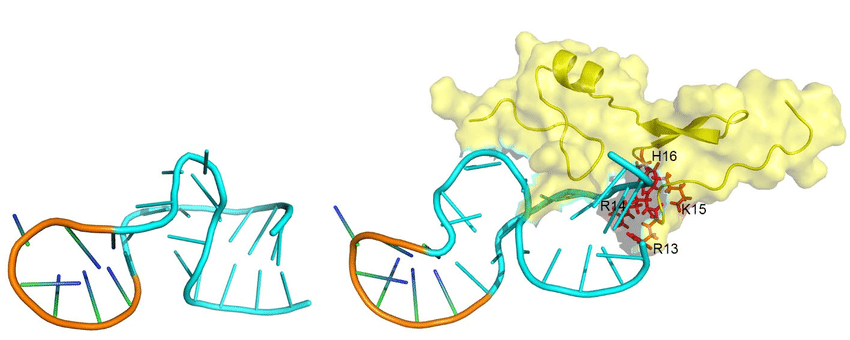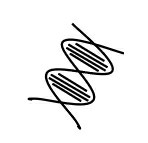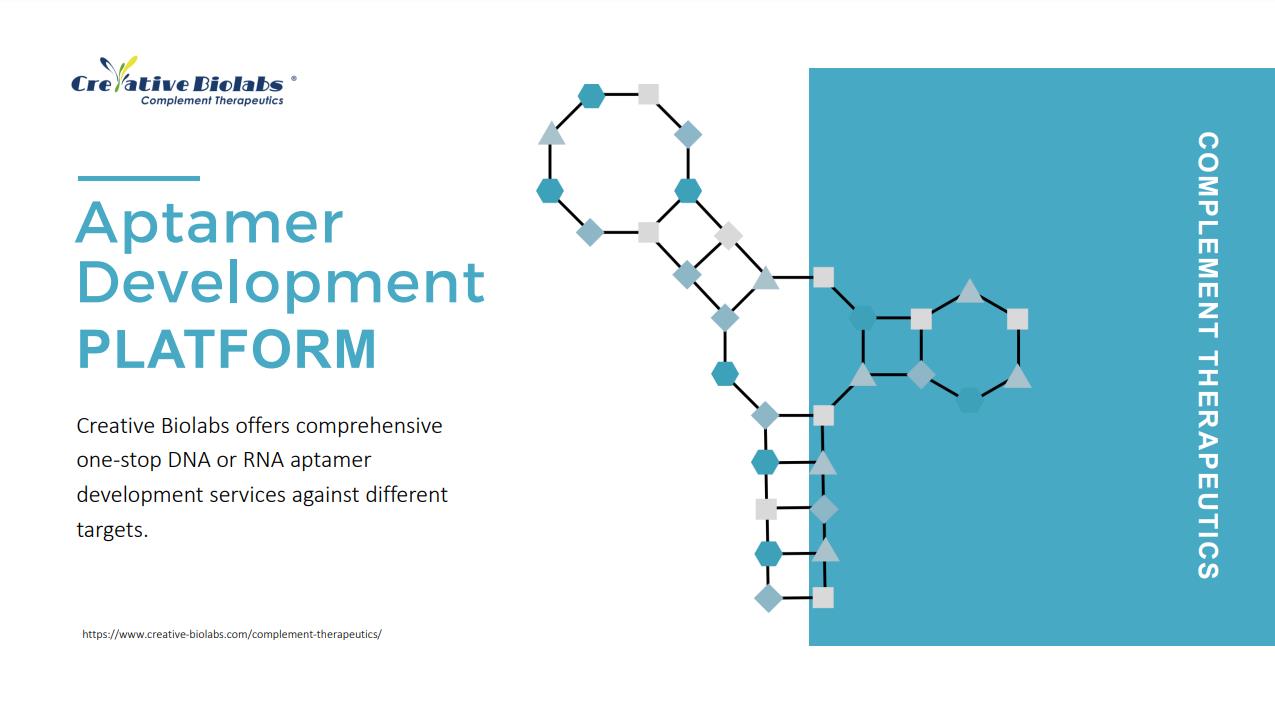Background Services Overview Related Products and Services Q&A Resources
Creative Biolabs gets equipped with a wealth of expertise garnered over years in antibody drug
development. Our researchers exude confidence in furnishing a comprehensive suite of aptamer development services
aimed at advancing complement therapeutics. We take pride in presenting timely and cost-effective offerings,
including customizable turn-key solutions tailored to individual client requisites.
Overview of Aptamer
The concept of aptamers, introduced by A. D. Ellington and C. Tuerk in 1990, encompasses a class of
single-stranded oligonucleotides capable of specifically binding to target molecules through molecular
interactions. Employing intermolecular forces, aptamers establish target-specific bonds. In contrast to other
nucleic acid probes, aptamers engage in interactions and binding with their targets through structural
recognition, akin to the antigen-antibody reaction process, rendering them analogous to "chemical antibodies."
A succession of structural investigations has revealed that aptamers harness akin binding interactions as those
observed in antibody-antigen complexes, and underscore affinity and specificity. Aptamers possess an array of
coveted attributes suitable for therapeutic and diagnostic applications, encompassing elevated specificity,
affinity, biological efficacy, and pharmacokinetic attributes. Moreover, they confer distinct competitive edges
over antibodies and alternative protein biologics.
 Fig. 1 Conformational Recognition of Targets Leading to Aptamer-Target Complex Formation: A Schematic Representation.1, 2
Fig. 1 Conformational Recognition of Targets Leading to Aptamer-Target Complex Formation: A Schematic Representation.1, 2
Introduction of Aptamer Screening: SELEX
The Classic Way in Aptamer The conventional method for aptamer screening, known as systematic evolution of
ligands by exponential enrichment (SELEX), rapidly identifies optimal binding sequences from a random
population. SELEX involves multiple rounds of selection and amplification cycles. In a DNA or RNA combinatorial
library, with up to 10^15 unique sequences, each comprising a 20-60 nucleotide random region, flanked by fixed
primer regions at the 5' and 3' ends. Through iterative cycles of binding, distribution, recovery, and
reamplification, specific sequences are enriched as aptamers, dominating the library. The screening process
involves altering the selection environment-such as buffer components, ionic strength, pH, binding temperature,
and time-to rigorously screen specific aptamers, influencing their affinity and function.
 Fig. 2 The pipeline of SELEX.
Fig. 2 The pipeline of SELEX.
Features of Aptamer

Stability
Aptamers typically exhibit high stability, maintaining structural integrity in diverse biological
environments, ensuring reliability and longevity in their applications.

Low Immunogenicity
Compared to some protein molecules, aptamers generally induce lower immune responses in vivo,
their use is less likely to trigger unnecessary immune reactions.

High Specificity
Aptamers can be designed to bind target molecules with high specificity, enabling accurate recognition
and separation of targets in complex biological samples.

Easy Synthesis and Modification
Aptamers can be synthesized using chemical methods, facilitating relatively easy and scalable
production. Additionally, their structure can be modified to optimize affinity and specificity.
Application
-
Drug Delivery: Because of the generally induce lower immune responses in vivo,
aptamers play a role in drug delivery systems, facilitating the specific binding of drugs and enabling precise
delivery to target cells or tissues, thereby minimizing impact on healthy tissues.
-
Diagnostic Tools: Aptamers can be employed to develop highly sensitive diagnostic tools, aiding
in the detection of disease markers or determination of disease status, providing crucial information for
personalized medicine.
-
Biosensors: Aptamers are utilized in constructing highly sensitive and selective biosensors for
the detection and monitoring of specific molecules in biological samples, such as proteins, cells, or drugs.
Hot Aptamers Products
Related Services
Please contact with us for more details.
Resources
Reference
-
By Ning Zhang, Zihao Chen, Dingdong Liu, Hewen Jiang, Zong-Kang Zhang, Aiping Lu, Bao-Ting Zhang, Yuanyuan Yu, and Ge Zhang - Zhang, N., Chen, Z., Liu, D., Jiang, H., Zhang, Z. K., Lu, A., ... & Zhang, G. (2021). Structural biology for the molecular insight between aptamers and target proteins. International Journal of Molecular Sciences, 22(8), 4093. Publisher: MDPI., CC BY 4.0, https://commons.wikimedia.org/w/index.php?curid=119979335
Questions & Answer
A: The turnaround time should be fast as 3-4 months.
A: For the development of specific services targeting it, we require various sample types such as purified protein, overexpressing cells, bacteria, viruses, and more. We accommodate a wide range of sample submissions. Please provide specific details, enabling us to offer tailor-made services to meet your needs.
A: In comparison to antibodies, aptamers offer lower production costs, compact size, molecular stability, and stronger interactions between nucleic acid aptamers and proteins. These attributes elevate the clinical and industrial applicability of aptamers, reinforcing their potential for widespread adoption.
A: We would need information about your target molecule, its concentration, and any specific environmental conditions or requirements that the aptamer needs to function in.
A: We adhere to stringent quality control processes during each step of aptamer production. Moreover, all aptamers are validated for their functionality and specificity before we deliver them to you.
A: Yes, we provide full support from development through to application. Our team of experts can help you integrate aptamers into your current experimental setup and provide advice on their usage and handling.
A: If the aptamer doesn't meet the requirements specified initially, we will do our best to troubleshoot and resolve the issue. We are committed to providing our clients with aptamers that meet their specific needs and will work closely with you to ensure satisfaction.
A: The cost of our service varies based on the complexity of the project. We can provide a detailed quote based on your specific needs.
For Research Use Only.
Related Sections:

 Fig. 1 Conformational Recognition of Targets Leading to Aptamer-Target Complex Formation: A Schematic Representation.1, 2
Fig. 1 Conformational Recognition of Targets Leading to Aptamer-Target Complex Formation: A Schematic Representation.1, 2
 Fig. 2 The pipeline of SELEX.
Fig. 2 The pipeline of SELEX.




